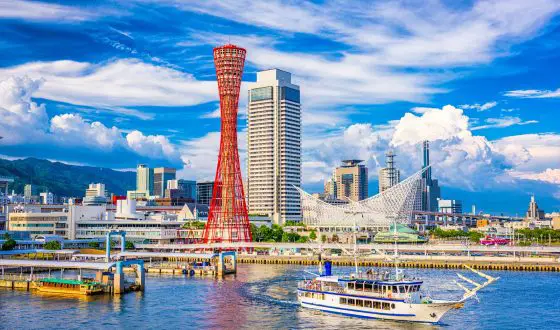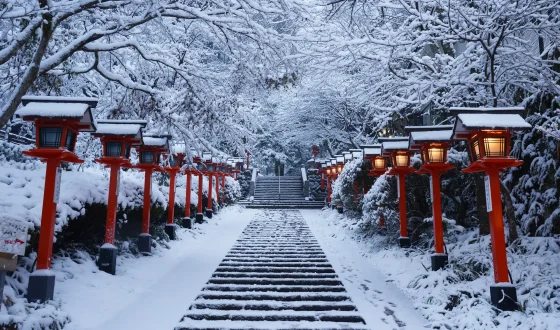How Much Money Should You Prepare for A 1-Week Trip to Japan?
Planning a trip to Japan can be an exciting but daunting task, especially when it comes to budgeting. One common question that many travelers ask is: how much money should you prepare for a 1-week trip to Japan?
While the answer may vary depending on your travel style and itinerary, in this post we will break down the main expenses you should consider when planning your budget, such as accommodation, transportation, food, activities, and souvenirs.
By the end of this article, you should have a better idea of what to expect in terms of costs, and some tips on how to save money without compromising on the quality of your trip.
So, let’s dive in and start planning your dream trip to Japan!
Accommodation Costs
The different types of accommodations (hotel, hostel, Airbnb, etc.)
The cost of accommodations can vary significantly depending on the type of lodging and the city in Japan. Here’s a general comparison of different types of accommodations and average costs in different cities:
1. Hotels
Hotels in Japan can range from budget options to luxury establishments. The average cost for a standard hotel room per night can vary between 8,000 to 25,000 yen (70 to 220 USD) in cities like Osaka and Kyoto, while in Tokyo, it can range from 12,000 to 35,000 yen (110 to 320 USD) or more.
2. Ryokans
Ryokans are traditional Japanese inns that offer a unique experience with tatami-matted rooms, futon beds, and communal baths. The prices for ryokans can vary greatly depending on the location, facilities, and level of service. On average, expect to pay around 15,000 to 40,000 yen (140 to 370 USD) per person per night.
3. Hostels
Hostels provide budget-friendly accommodations with shared facilities such as dormitory-style rooms, communal kitchens, and common areas. Prices for hostels in popular cities range from 2,000 to 5,000 yen (20 to 45 USD) per night, depending on the location and the season.
4. Airbnb
Airbnb offers a wide range of accommodations, including entire apartments, private rooms, and shared spaces. The prices can vary significantly based on location, size, amenities, and demand. On average, you can expect to pay around 6,000 to 15,000 yen (55 to 140 USD) per night for an Airbnb in major cities.

The cost of accommodations can vary significantly depending on the type of lodging and the city in Japan. (Source: Internet)
Average costs of accommodation in different cities in Japan
Here are the average costs of accommodations in some popular cities in Japan (per night):
- Tokyo: Hotels: 12,000 to 35,000 yen (110 to 320 USD), Hostels: 2,000 to 5,000 yen (20 to 45 USD), Airbnb: 6,000 to 15,000 yen (55 to 140 USD)
- Osaka: Hotels: 8,000 to 25,000 yen (70 to 220 USD), Hostels: 2,000 to 4,500 yen (20 to 40 USD), Airbnb: 5,000 to 12,000 yen (45 to 110 USD)
- Kyoto: Hotels: 8,000 to 25,000 yen (70 to 220 USD), Hostels: 2,000 to 5,000 yen (20 to 45 USD), Airbnb: 6,000 to 15,000 yen (55 to 140 USD)
- Hiroshima: Hotels: 7,000 to 20,000 yen (65 to 180 USD), Hostels: 2,000 to 4,500 yen (20 to 40 USD), Airbnb: 5,000 to 12,000 yen (45 to 110 USD)
- Sapporo: Hotels: 7,000 to 20,000 yen (65 to 180 USD), Hostels: 2,000 to 4,500 yen (20 to 40 USD), Airbnb: 5,000 to 12,000 yen (45 to 110 USD)
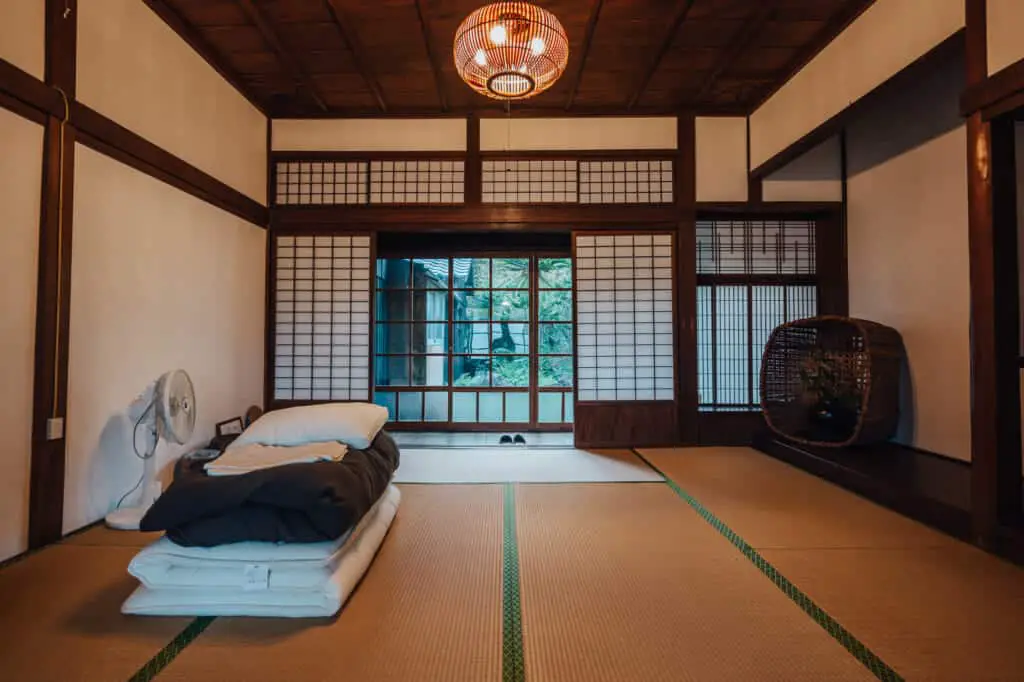
Here are the average costs of accommodations in some popular cities in Japan. (Source: Internet)
Keep in mind that these are average prices, and they can vary depending on the time of year, location, and the specific property’s quality and popularity. It’s always a good idea to check current prices and availability when planning your trip.
Transportation Costs
The different modes of transportation in Japan (train, bus, taxi, etc.)
Japan offers a variety of transportation options for travelers. Here’s an overview of different modes of transportation, including trains, buses, taxis, and the Japan Rail Pass, along with average transportation costs in different cities:
1. Trains
Trains are one of the most popular and efficient modes of transportation in Japan. The country has an extensive rail network, including shinkansen (bullet trains), local trains, and subway systems in major cities. Train fares vary depending on the distance traveled and the type of train. On average, short-distance train fares can range from 150 to 500 yen (1.5 to 4.5 USD), while shinkansen fares can range from 5,000 to 15,000 yen (45 to 135 USD) for longer distances.
2. Buses
Buses are another common mode of transportation, particularly for short-distance travel or reaching destinations not covered by trains. City buses typically charge a flat fare of around 200 to 300 yen (1.8 to 2.7 USD) per ride, while long-distance buses have varying prices depending on the distance traveled. For example, a long-distance bus from Tokyo to Osaka can cost around 4,000 to 8,000 yen (36 to 72 USD) one way.
3. Taxis
Taxis are readily available in urban areas and can be convenient for shorter trips or when traveling with heavy luggage. Taxis in Japan are metered, and the fares can vary depending on the distance traveled and time of day. Generally, the initial fare starts around 400 to 700 yen (3.6 to 6.3 USD) and increases by 80 to 90 yen (0.7 to 0.8 USD) per kilometer.
5. Japan Rail Pass
The Japan Rail Pass is a special ticket available for foreign tourists that allows unlimited travel on Japan’s extensive rail network, including shinkansen, limited express, and local trains operated by Japan Railways (JR).
The pass comes in different durations (7, 14, or 21 days) and can be a cost-effective option for travelers planning to do extensive rail travel in Japan. The pass must be purchased before arriving in Japan, and the prices range from approximately 29,650 to 108,250 yen (270 to 980 USD) depending on the duration and class.
The Japan Rail Pass and its benefits
The Japan Rail Pass (JR Pass) is a special ticket available exclusively for foreign tourists visiting Japan. It allows unlimited travel on Japan’s extensive rail network operated by Japan Railways (JR), including shinkansen (bullet trains), limited express trains, and local trains. Here are the key benefits and features of the Japan Rail Pass:
1. Unlimited travel
The JR Pass allows for unlimited travel on JR-operated trains within the designated validity period. This includes not only regular trains but also the high-speed shinkansen network, which allows you to travel quickly and efficiently between major cities.
2. Cost savings
The Japan Rail Pass can offer significant cost savings, especially for travelers planning to make multiple long-distance trips. The individual ticket prices for shinkansen journeys can be quite high, but with the JR Pass, you can make unlimited trips at a fixed cost.
3. Flexibility
The pass comes in three durations: 7, 14, and 21 days. You can choose the duration that best suits your travel plans. During the validity period, you can use the pass on any day without having to worry about individual ticket purchases.
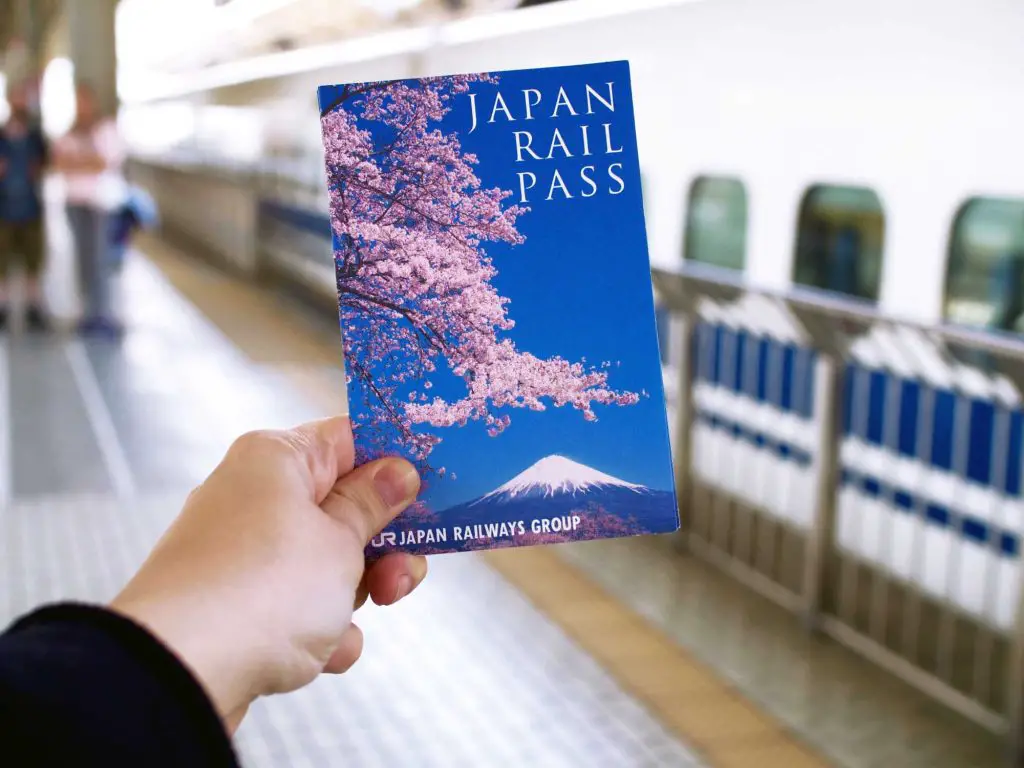
The Japan Rail Pass (JR Pass) is a special ticket available exclusively for foreign tourists visiting Japan. (Source: Internet)
4. Convenience
With the JR Pass, you can simply show your pass at the ticket gates without the need for purchasing individual tickets for each journey. This saves time and provides convenience, especially during peak travel periods when ticket lines can be long.
5. Wide coverage
The Japan Rail Pass covers most JR-operated lines, including not only the shinkansen but also local trains, limited express trains, and even some JR-operated buses and ferries. It provides comprehensive coverage across the country, allowing you to explore various regions easily.
You can also like:
- How Many Days In Kyoto: Best Kyoto Itinerary Guide
- Is It Safe to Travel to Japan?
- Japanese Sauna Culture – Why Saunas Are So Popular in Japan
6. Green Car option
The Japan Rail Pass is available in two classes: Ordinary (standard class) and Green Car (first class). The Green Car option offers more spacious seating and a quieter environment, providing a higher level of comfort during your train journeys.
7. Activation period
The JR Pass has an activation period, meaning you can purchase it in advance but activate it on a specific date within a certain timeframe (typically within three months of purchase). This allows you to plan and purchase the pass ahead of time.
It’s important to note that the Japan Rail Pass is available for purchase only before arriving in Japan and is exclusively for foreign tourists. You will receive an exchange order that you need to exchange for the actual pass upon arrival in Japan at designated JR exchange offices.
The Japan Rail Pass can be an excellent option for travelers who plan to explore multiple cities and regions in Japan, especially with a focus on utilizing the extensive rail network. However, it’s advisable to check your specific travel plans, routes, and costs to determine if the JR Pass is cost-effective for your trip.
Average costs of transportation in different cities in Japan
Average transportation costs in some popular cities in Japan:
- Tokyo: Train fares: 200 to 500 yen (1.8 to 4.5 USD), Bus fares: 200 to 300 yen (1.8 to 2.7 USD), Taxi fares: Starting at 400 yen (3.6 USD) + distance-based charges.
- Osaka: Train fares: 200 to 500 yen (1.8 to 4.5 USD), Bus fares: 200 to 300 yen (1.8 to 2.7 USD), Taxi fares: Starting at 410 yen (3.7 USD) + distance-based charges.
- Kyoto: Train fares: 200 to 500 yen (1.8 to 4.5 USD), Bus fares: 230 to 300 yen (2 to 2.7 USD), Taxi fares: Starting at 660 yen (6 USD) + distance-based charges.
- Hiroshima: Train fares: 150 to 500 yen (1.4 to 4.5 USD), Bus fares: 200 to 270 yen (1.8 to 2.5 USD), Taxi fares: Starting at 410 yen (3.7 USD) + distance-based charges.
- Sapporo: Train fares: 200 to 500 yen (1.8 to 4.5 USD), Bus fares: 200 to 300 yen (1.8 to 2.7 USD), Taxi fares: Starting at 660 yen (6 USD) + distance-based charges.
It’s important to note that these are average costs, and prices can vary depending on the specific route, distance traveled, and time of day. Additionally, transportation costs may be subject to changes, so it’s advisable to check the latest fares and ticket prices when planning your trip.
Food and Drink Costs
The different types of food and drink in Japan
Japan offers a diverse culinary scene with various types of food and drink options. Here’s an overview of different types of food and drink in Japan, tips on saving money, and average costs in different cities:
1. Traditional Japanese Cuisine
Japanese cuisine is renowned for its fresh ingredients, meticulous preparation, and artistic presentation. Traditional dishes include sushi, sashimi, ramen, udon, tempura, yakitori, and many more. Prices for these dishes can vary depending on the restaurant’s quality and location.
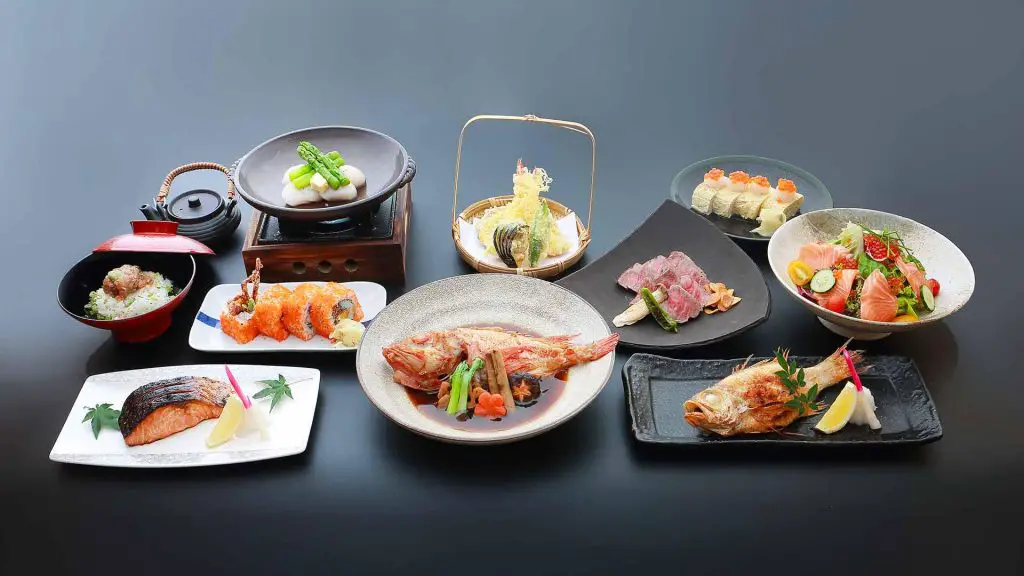
Japanese cuisine is renowned for its fresh ingredients, meticulous preparation, and artistic presentation. (Source: Internet)
2. Convenience Stores
Convenience stores such as 7-Eleven, Lawson, and FamilyMart are ubiquitous in Japan and offer a wide range of affordable food and drink options. You can find pre-packaged meals, onigiri (rice balls), bento boxes, sandwiches, and drinks at reasonable prices.
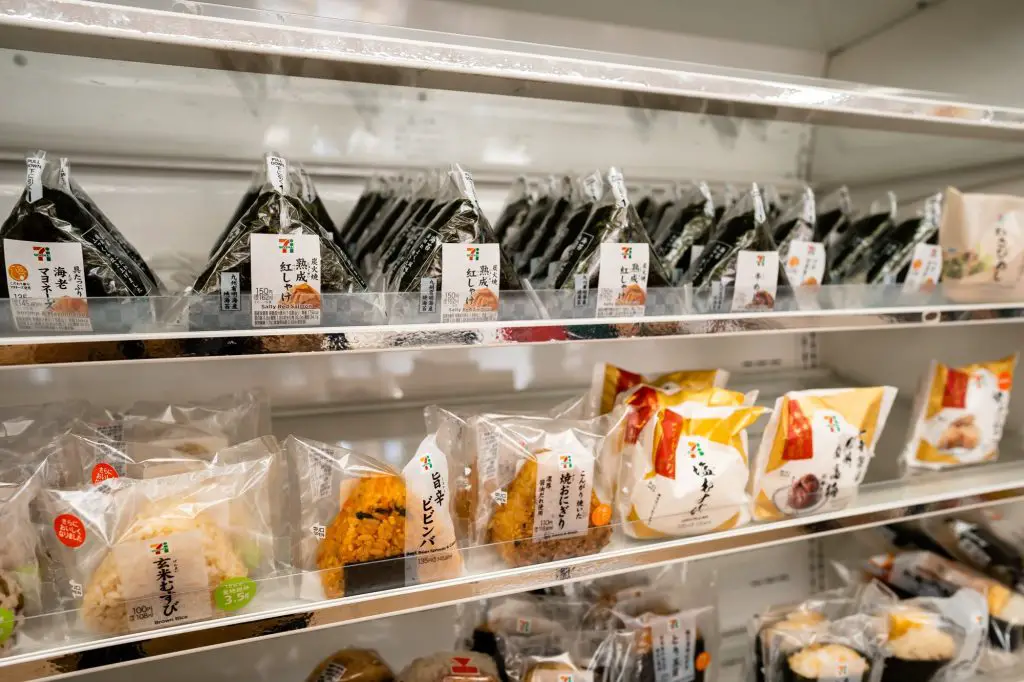
Convenience stores such as 7-Eleven, Lawson, and FamilyMart are ubiquitous in Japan and offer a wide range of affordable food and drink options. (Source: Internet)
3. Izakayas
Izakayas are casual Japanese pubs that serve a variety of small, shareable dishes along with alcoholic beverages. They are popular gathering places for locals and tourists alike. Izakaya prices can vary depending on the items ordered, but generally, you can enjoy a meal and a few drinks for a reasonable price.
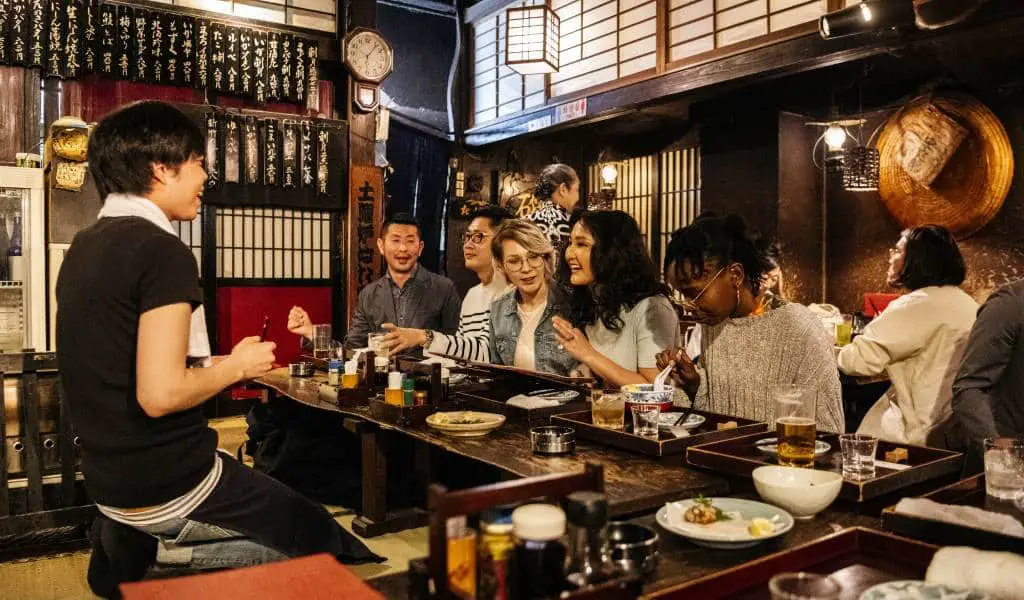
Izakayas are casual Japanese pubs that serve a variety of small, shareable dishes along with alcoholic beverages. (Source: Internet)
4. Street Food
Japanese street food stalls and food markets offer a fantastic opportunity to sample local specialties at affordable prices. You can find items like takoyaki (octopus balls), yakisoba (fried noodles), okonomiyaki (savory pancake), and various grilled skewers at street food stalls.
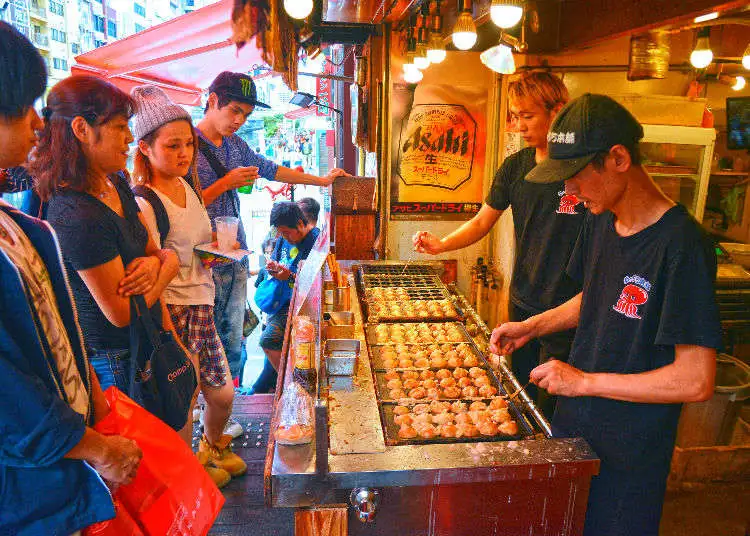
Japanese street food stalls and food markets offer a fantastic opportunity to sample local specialties at affordable prices. (Source: Internet)
How to save money on food and drink
Tips to save money on food and drink in Japan:
- Eat at local eateries: Look for small, local restaurants that offer set meals or lunch specials. These places often provide good value for money compared to more upscale establishments.
- Explore food courts: In shopping malls and department stores, you can find food courts with a variety of affordable options.
- Try affordable lunch sets: Many restaurants offer lunch sets that include a main dish, side dishes, and sometimes a drink at a discounted price compared to ordering à la carte.
- Utilize discount coupons: Look for discount coupons or vouchers available in guidebooks, online platforms, or at tourist information centers. These can provide savings on meals at specific restaurants.
- Take advantage of happy hours: If you’re interested in having a drink, check out bars and izakayas that offer happy hour discounts on drinks and sometimes food.
Average costs of food and drink in different cities in Japan
Average costs of food and drink in some popular cities in Japan:
- Tokyo: Budget meals at local eateries: 800 to 1,500 yen (7 to 14 USD), Mid-range restaurant meals: 1,500 to 3,000 yen (14 to 27 USD), Sushi or sashimi meal: 3,000 to 5,000 yen (27 to 45 USD), Fast food meals: 500 to 1,000 yen (4.5 to 9 USD), A pint of beer: 500 to 800 yen (4.5 to 7 USD).
- Osaka: Budget meals at local eateries: 800 to 1,500 yen (7 to 14 USD), Mid-range restaurant meals: 1,500 to 3,000 yen (14 to 27 USD), Okonomiyaki meal: 1,000 to 2,000 yen (9 to 18 USD), Fast food meals: 500 to 1,000 yen (4.5 to 9 USD), A pint of beer: 500 to 800 yen (4.5 to 7 USD).
It’s important to note that these are average prices, and costs can vary depending on the specific restaurant, location, and the type of food and drink. Additionally, prices may be subject to change, so it’s advisable to check the current prices and menu options when dining out.
Tourist Attraction Costs
The popular tourist attractions in Japan
Japan is a country rich in cultural heritage, natural beauty, and historical landmarks. Here’s an overview of popular tourist attractions, tips on getting discounted tickets and passes, and average costs in different cities:
1. Temples and Shrines
Japan is home to numerous temples and shrines, each with its unique architectural style and historical significance. Popular ones include Kinkaku-ji (Golden Pavilion) in Kyoto, Senso-ji in Tokyo, and Fushimi Inari Taisha in Kyoto. The entrance fees for temples and shrines usually range from 300 to 1,000 yen (2.7 to 9 USD) per person.
2. Castles
Japan is famous for its well-preserved castles that offer a glimpse into its feudal past. Notable castles include Himeji Castle, Matsumoto Castle, and Osaka Castle. Castle entrance fees typically range from 500 to 1,000 yen (4.5 to 9 USD) per person.
3. Gardens and Parks
Japan’s gardens and parks are renowned for their beauty and tranquility. Some popular choices include Kenrokuen Garden in Kanazawa, Shinjuku Gyoen National Garden in Tokyo, and the Peace Memorial Park in Hiroshima. Entrance fees for gardens and parks usually range from 200 to 500 yen (1.8 to 4.5 USD) per person.
4. Museums
Japan boasts a wide range of museums covering various subjects such as art, history, and technology. The admission fees for museums can vary, with some offering discounted rates for students and seniors. On average, museum entrance fees range from 500 to 1,500 yen (4.5 to 14 USD) per person.
How to get discounted tickets and passes
Tips for getting discounted tickets and passes:
- City attraction passes: Many cities offer discounted passes that allow access to multiple attractions within a specific timeframe. These passes often provide cost savings compared to purchasing individual tickets. Examples include the Tokyo Metropolitan Pass, Osaka Amazing Pass, and Kyoto Sightseeing Pass.
- Combination tickets: Some attractions offer combination tickets where you can visit multiple sites at a discounted price. For example, in Kyoto, you can purchase a combination ticket that allows entry to multiple temples and shrines.
- Online ticket platforms: Utilize online ticket platforms or official attraction websites to check for any discounts or promotions. Sometimes, you can find discounted tickets or package deals when booking in advance.
- Discount cards: If you plan to visit multiple attractions or travel extensively within Japan, consider the Japan Rail Pass, which provides unlimited train travel and can include certain attractions as well. Additionally, the Japan Tourist Pass and regional tourist cards may offer discounted or free access to specific attractions.
Average costs of tourist attractions in different cities in Japan
Average costs of tourist attractions in some popular cities in Japan:
- Tokyo: Tokyo Skytree: 3,000 yen (27 USD), Tokyo Disneyland: 8,200 yen (75 USD), Meiji Shrine: Free, Tokyo National Museum: 620 yen (5.5 USD).
- Kyoto: Kiyomizu-dera Temple: 400 yen (3.6 USD), Fushimi Inari Taisha: Free, Nijo Castle: 600 yen (5.5 USD), Arashiyama Bamboo Grove: Free.
- Osaka: Osaka Castle: 600 yen (5.5 USD), Universal Studios Japan: 7,800 yen (71 USD), Osaka Aquarium Kaiyukan: 2,500 yen (23 USD), Dotonbori Area: Free.
- Hiroshima: Hiroshima Peace Memorial Museum: 200 yen (1.8 USD), Hiroshima Peace Memorial Park: Free, Miyajima Island: Free (extra fee for some attractions).
- Sapporo: Sapporo TV Tower: 720 yen (6.5 USD), Odori Park: Free, Hokkaido Historical Village: 800 yen (7.2 USD), Sapporo Beer Museum: Free.
- Nagoya: Nagoya Castle: 500 yen (4.5 USD), Atsuta Shrine: Free, SCMAGLEV and Railway Park: 1,000 yen (9 USD), Port of Nagoya Public Aquarium: 2,300 yen (21 USD).
- Nara: Todai-ji Temple: 500 yen (4.5 USD), Nara Park: Free, Kasuga Taisha Shrine: 500 yen (4.5 USD), Nara National Museum: 520 yen (4.7 USD).
- Kobe: Kobe Port Tower: 700 yen (6.3 USD), Kitano Ijinkan District: Free (some buildings have admission fees), Nunobiki Herb Garden: 1,500 yen (14 USD), Kobe Maritime Museum: 600 yen (5.5 USD).
Miscellaneous Costs
Other expenses, such as souvenirs, travel insurance, and mobile data
Here’s an explanation of some other miscellaneous expenses you might encounter during your trip to Japan, as well as average costs in different cities:
1. Souvenirs
Japan offers a wide range of unique and high-quality souvenirs. The cost of souvenirs can vary greatly depending on the item and its quality. Some popular souvenirs include traditional crafts, local food products, electronics, and anime-related merchandise. Prices can range from a few hundred yen to several thousand yen or more, depending on the item.
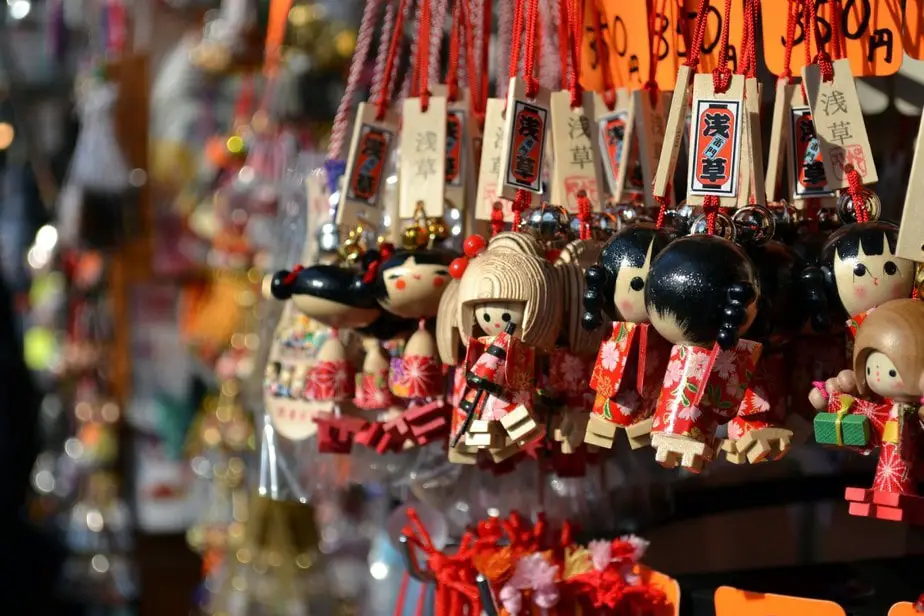
Japan offers a wide range of unique and high-quality souvenirs. (Source: Internet)
2. Travel Insurance
It’s highly recommended to have travel insurance when visiting Japan to protect yourself against unforeseen circumstances such as medical emergencies, trip cancellations, or lost luggage.
The cost of travel insurance can vary based on factors such as coverage, duration of stay, and age. On average, travel insurance can cost around 500 to 2,000 yen (4.5 to 18 USD) per day, depending on the coverage.
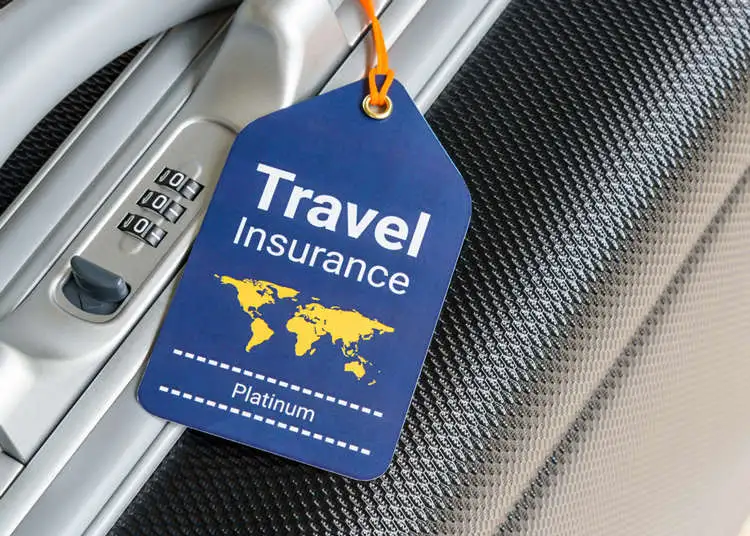
The cost of travel insurance can vary based on factors such as coverage, duration of stay, and age. (Source: Internet)
3. Mobile Data and Wi-Fi
Staying connected during your trip is essential for navigation, communication, and accessing online resources. You have several options for mobile data and internet access in Japan. SIM cards, pocket Wi-Fi devices, and eSIMs are widely available.
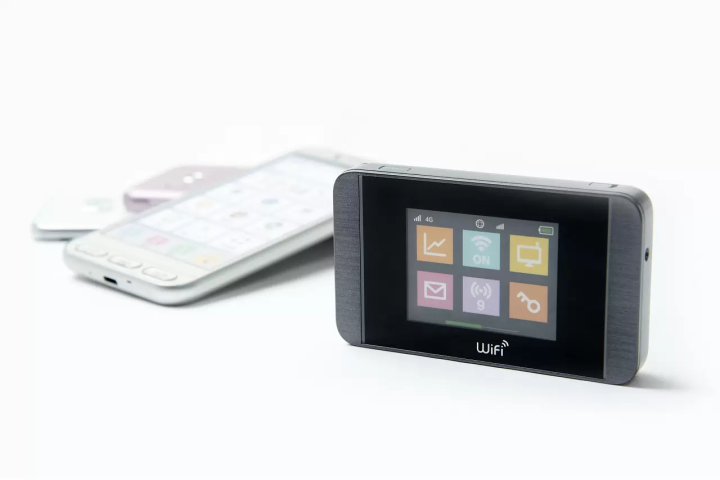
Staying connected during your trip is essential for navigation, communication, and accessing online resources. (Source: Internet)
The costs can vary depending on the duration of use, data capacity, and provider. On average, a pocket Wi-Fi rental can cost around 500 to 1,500 yen (4.5 to 14 USD) per day.
4. Tipping
Tipping is not a common practice in Japan, and it’s generally not expected in restaurants, hotels, or taxis. The prices you see in restaurants and stores usually include service charges and taxes. It’s customary to pay the amount displayed on the bill without additional tipping.
Average costs of miscellaneous expenses in different cities in Japan
Average costs of miscellaneous expenses in some popular cities in Japan:
- Tokyo: Souvenirs: Varies greatly depending on the item. Travel Insurance: Around 500 to 2,000 yen (4.5 to 18 USD) per day. Mobile Data and Wi-Fi: Pocket Wi-Fi rental around 500 to 1,500 yen (4.5 to 14 USD) per day.
- Kyoto: Souvenirs: Varies greatly depending on the item. Travel Insurance: Around 500 to 2,000 yen (4.5 to 18 USD) per day. Mobile Data and Wi-Fi: Pocket Wi-Fi rental around 500 to 1,500 yen (4.5 to 14 USD) per day.
- Osaka: Souvenirs: Varies greatly depending on the item. Travel Insurance: Around 500 to 2,000 yen (4.5 to 18 USD) per day. Mobile Data and Wi-Fi: Pocket Wi-Fi rental around 500 to 1,500 yen (4.5 to 14 USD) per day.
Please note that the costs provided are average estimates and can vary depending on individual preferences, choices, and specific circumstances. It’s advisable to research and compare prices from different providers to get the best value for your needs.
Methods to save money when traveling to Japan
Here are some methods to save money when traveling to Japan:
- Travel during off-peak seasons: Consider visiting Japan during the shoulder seasons (spring and autumn) when the weather is still pleasant but the tourist crowds are thinner. This can lead to lower prices for flights, accommodations, and attractions.
- Look for flight deals: Keep an eye out for flight deals and promotions offered by airlines. Booking in advance or being flexible with your travel dates can help you find better prices. Consider using flight comparison websites or signing up for airline newsletters to stay updated on deals.
- Use public transportation: Japan has an extensive and efficient public transportation system, including trains, buses, and subways. Utilize local transportation options instead of relying on taxis, which can be more expensive. Consider getting a rechargeable IC card like Suica or Pasmo for convenient fare payment.
- Purchase a Japan Rail Pass: If you plan to do a lot of intercity travel, consider getting a Japan Rail Pass. This pass allows unlimited travel on JR trains and can be a cost-effective option. It’s available for foreign tourists and needs to be purchased before arriving in Japan.
- Opt for budget accommodations: Look for budget-friendly accommodations such as hostels, guesthouses, or capsule hotels. These options can provide a comfortable stay at a more affordable price compared to upscale hotels. Consider staying in less touristy areas or in neighboring cities and using public transportation to reach major attractions.
- Eat at local and affordable establishments: Explore local eateries, small restaurants, and food stalls to experience authentic Japanese cuisine at more reasonable prices. Look for “izakayas” (Japanese pubs), “ramen” or “udon” shops, and “conveyor belt sushi” restaurants. Convenience stores and supermarket deli sections also offer affordable meal options.
- Take advantage of free attractions: Japan has many attractions that are free or have minimal entry fees. Enjoy exploring public parks, gardens, temples, and shrines that don’t require an admission fee. Some popular free attractions include Meiji Shrine in Tokyo, Fushimi Inari Shrine in Kyoto, and Ueno Park in Tokyo.
- Use discount passes and coupons: Many cities in Japan offer discounted passes that provide unlimited travel on local transportation and discounted or free entry to attractions. Look for city-specific tourist passes, such as the Tokyo Metro Pass or Kyoto Sightseeing Pass. Additionally, check for discount coupons or vouchers available at tourist information centers or online platforms.
- Shop smart for souvenirs: Look for reasonably priced souvenirs at local markets, street vendors, or even 100-yen shops. These places offer a wide range of affordable items such as keychains, stationery, snacks, and traditional trinkets. Avoid shopping at touristy areas where prices tend to be higher.
- Plan your activities strategically: Some attractions offer discounted or free admission during certain times or days of the week. Research and plan your visits accordingly to take advantage of these opportunities. For example, some museums offer discounted or free entry on specific weekdays.
- Stay connected with Wi-Fi: Take advantage of free Wi-Fi hotspots available in many public places, including airports, train stations, and convenience stores. Alternatively, consider renting a pocket Wi-Fi device or getting a local SIM card for reliable and affordable internet access.
- Avoid unnecessary expenses: Be mindful of your spending and avoid unnecessary expenses. Set a daily budget and track your expenses to stay on track. Prioritize experiences that are meaningful to you and avoid impulsive purchases.
By incorporating these methods, you can make your trip to Japan more affordable while still enjoying its unique culture, attractions, and culinary delights. Safe travels!
Tips for traveling to Japan
Here are some general tips for traveling to Japan:
- Plan your itinerary: Research and plan your itinerary in advance to make the most of your time in Japan. Consider the places you want to visit, attractions you want to see, and activities you want to experience. This will help you make efficient use of your time and ensure you don’t miss out on any must-see destinations.
- Learn basic Japanese phrases: While many Japanese people can communicate in English, learning a few basic Japanese phrases will go a long way in making your interactions smoother and more enjoyable. Simple greetings, thank you, and please are always appreciated.
- Carry cash: While credit cards are widely accepted in major cities and establishments, it’s a good idea to carry some cash with you, especially for smaller shops, local restaurants, and transportation options. Make sure to withdraw cash from ATMs at banks or convenience stores that accept foreign cards.
- Respect local customs and etiquette: Japan has a rich culture and strong emphasis on etiquette. Familiarize yourself with basic customs, such as bowing when greeting, taking off your shoes when entering certain establishments, and using chopsticks correctly. Respecting local customs will be appreciated by the locals and enhance your experience.
- Follow transportation etiquette: When using public transportation, such as trains and buses, observe the local customs. Maintain a quiet environment, avoid eating on trains (unless specified), and give up your seat for the elderly, pregnant women, or individuals with disabilities.
- Observe proper temple and shrine etiquette: When visiting temples and shrines, be mindful of the rules and customs. Remove your hat, speak softly, and follow any specific instructions or guidelines. Be respectful of sacred spaces and avoid taking photos where it’s prohibited.
- Take advantage of convenience stores: Convenience stores (known as “konbini”) are found throughout Japan and offer a wide range of products and services. They are convenient places to grab affordable meals, snacks, drinks, and daily essentials. They also have ATMs that accept foreign cards.
- Stay connected with Wi-Fi: Access to the internet can be crucial for navigation and communication while traveling. Take advantage of free Wi-Fi hotspots available in many public places, such as airports, train stations, and coffee shops. Consider renting a pocket Wi-Fi device or getting a local SIM card for reliable internet access.
- Stay hydrated and carry a reusable water bottle: Tap water in Japan is safe to drink, so carry a reusable water bottle and refill it as needed. Staying hydrated is important, especially during your travels and sightseeing.
- Check the weather and pack accordingly: Japan experiences diverse climates, so check the weather forecast for your travel dates and pack appropriate clothing. Don’t forget essentials like comfortable walking shoes, an umbrella, and appropriate attire for visiting temples and shrines.
- Stay updated on transportation schedules: Public transportation in Japan is known for its punctuality. Stay updated on train and bus schedules, especially if you’re planning to travel between cities. Make note of any limited express or reserved seating requirements.
- Take shoes that are easy to slip on and off: In Japan, it’s customary to take off your shoes when entering traditional ryokans, some restaurants, and even some homes. Opt for shoes that are easy to slip on and off to make these transitions more convenient.
These tips should help you have a smooth and enjoyable trip to Japan. Remember to embrace the unique culture, explore off-the-beaten-path destinations, and savor the delicious local cuisine. Have a wonderful journey!
FAQs
1. What amount of cash do I need to carry to Japan for a week?
We advise $640 in spending money for an 8-day trip, which works out to around $80 per person per day. Remember that this excludes your travel insurance, lodging, ground transportation, airfare, and pocket Wi-Fi.
2. Is a week enough for Japan?
Of course, there is a lot to see in Japan, but if you just have a short amount of time for your trip, seven days is a great length of time to see a few key locations. Furthermore, even if you are unable to see everything in Japan in one week, it will still be fantastic!
3. Does Japan require a lot of cash?
Although you will undoubtedly require some cash, it is not a good idea to carry large sums that could be easily stolen, lost, or simply spent too quickly. In Japan, there are three primary types of cards: debit cards, travel money cards, and credit cards.
4. Must I purchase yen before visiting Japan?
For instance, if you are traveling from the United States to Japan, you should wait to convert your dollars into yen. In contrast to Japan, Southeast Asian nations offer the best exchange rates for the yen.
5. Should I travel to Japan with cards or cash?
Even while credit cards are becoming accepted there, cash is still king there. Don’t assume that small businesses, especially “mom and pop” establishments, will let you use your credit card. Always have a backup supply of Japanese currency on you.
6. Does Japan allow the usage of ATM cards?
All popular credit and debit cards from other countries are often accepted at international ATMs. With regard to Japan Post ATMs, Visa, Plus, MasterCard, Maestro, Cirrus, American Express, China Unionpay, Discover, and JCB cards can typically be used.
7. How can I acquire yen for the lowest price?
The best (and most affordable) place to exchange money is nearly always your bank or credit union, even though there might be a small fee if you exchange less than a particular amount. You might be able to place a currency order at a branch, over the phone, online, for delivery to your home, or for pick up at a branch.
8. Do people tip in Japan?
Tipping is not customary in Japan, and if you try to leave one, you’ll almost probably get rejected (which might be unpleasant). It is believed in Japan that when you eat out or have a drink at a bar, you are already compensating the institution for outstanding service.
9. Is cash free in Japan?
Although there are still many locations in Japan where cash is necessary, cashless shopping has grown in popularity recently. The availability of cards and electronic money is noted at payment counters and establishment entrances.
10. Why are yen prices so low?
Japan, a country with few natural resources, is forced to import food and energy. It is necessary to sell the yen in order to purchase the dollar since American dollars are required for imports. Therefore, if resource prices continue to rise, there is a strong likelihood that the yen will remain weak.
Conclusion
In conclusion, how much money you should prepare for a 1 week trip to Japan depends on several factors such as your travel style, accommodation preferences, and food choices. However, based on our research, we recommend setting a budget of at least $1,500-$2,000 for a comfortable and enjoyable experience.
This should cover expenses such as transportation, accommodation, food, and activities. It’s also important to keep in mind that unexpected expenses can arise during your trip, so it’s recommended to have some extra funds on hand.
Ultimately, the amount you spend on your trip will depend on your personal preferences, but with careful planning and budgeting, you can have a fantastic time in Japan without breaking the bank. We hope this guide has been helpful in preparing for your upcoming trip to Japan.

